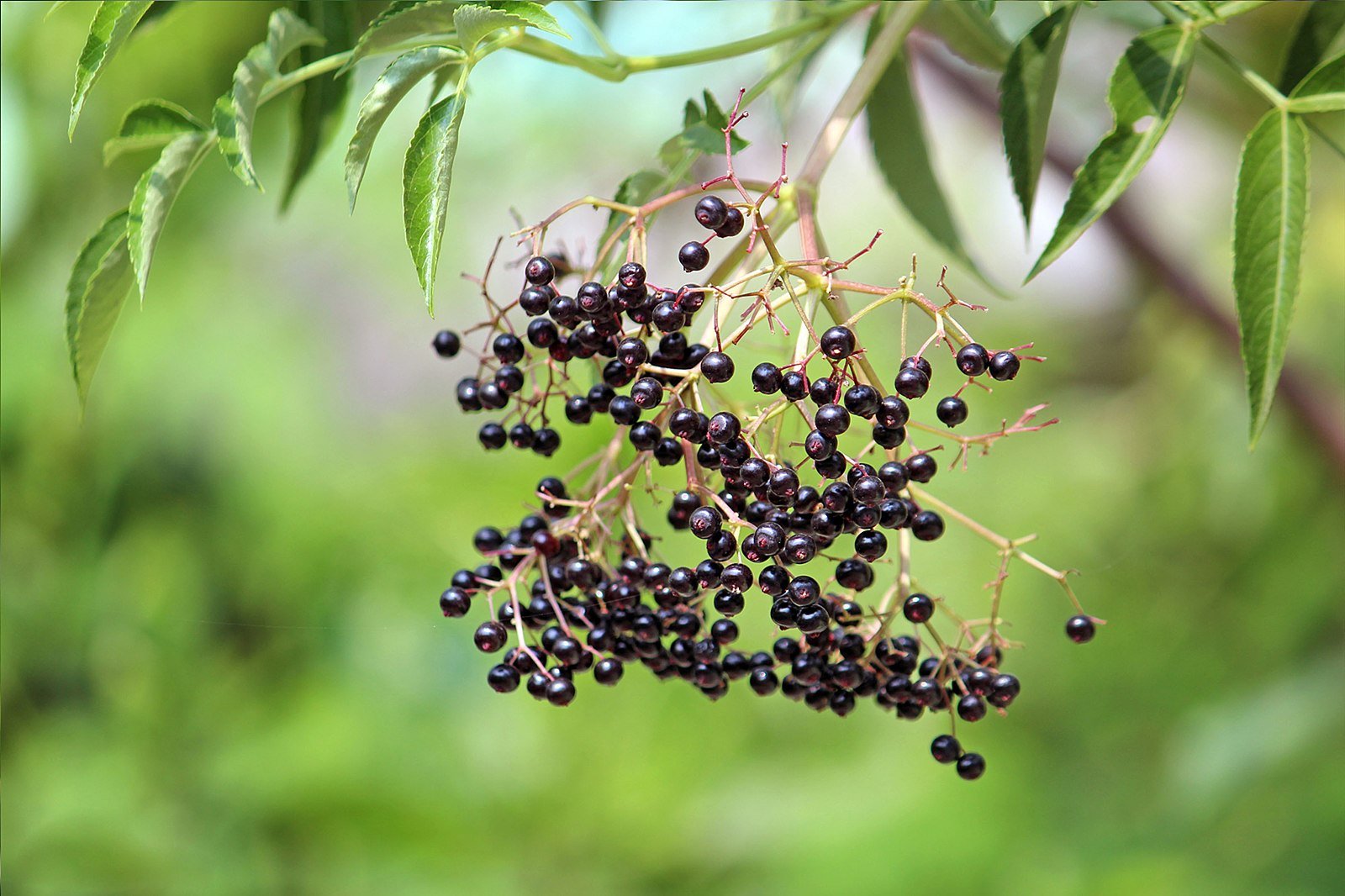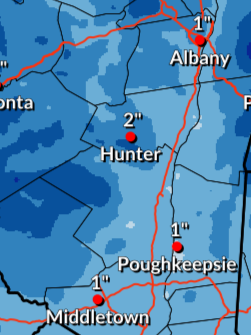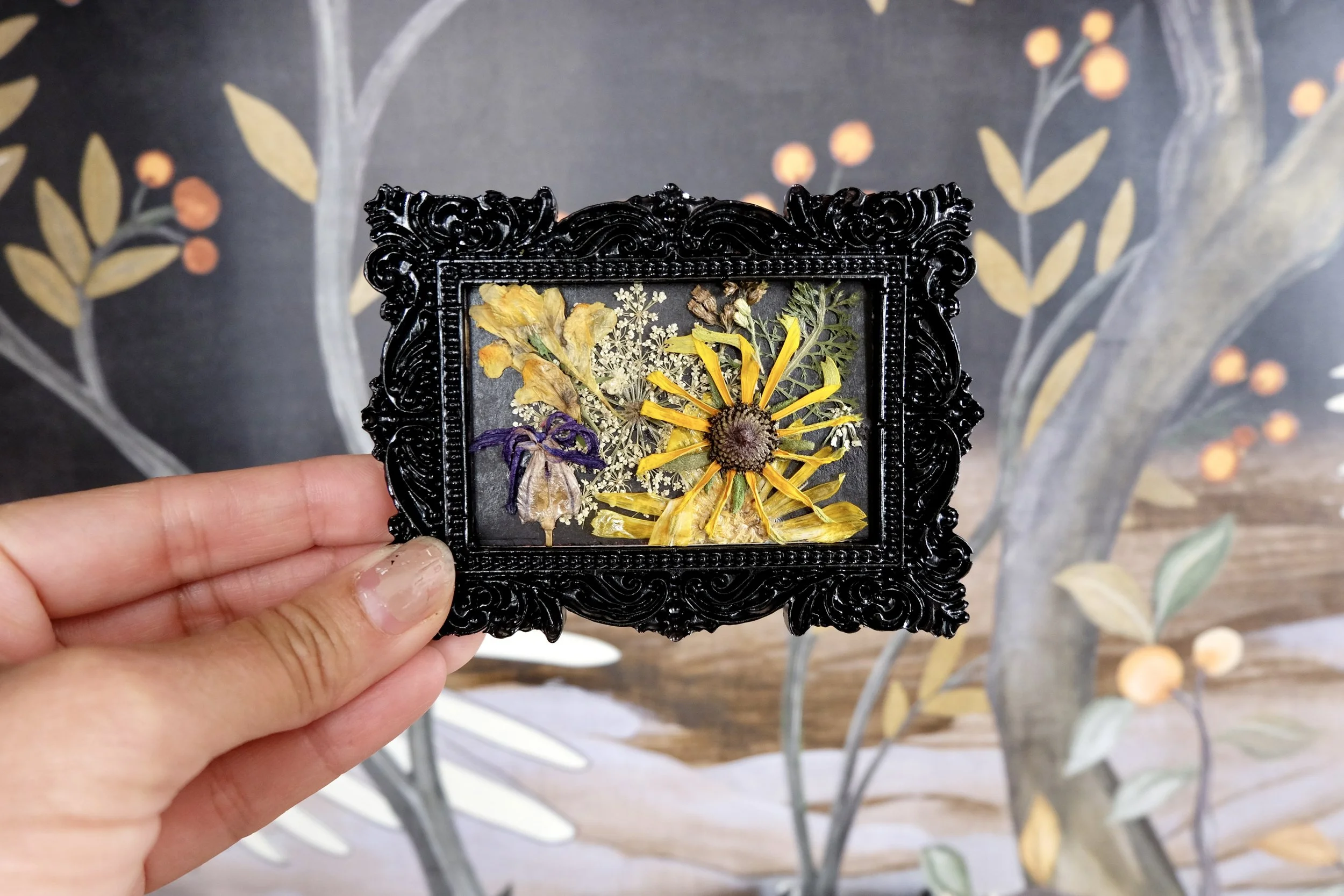Native Shrubs for Native Birds
by: lorien@hvny.info
When walking in the woods, fields, or towns of the Hudson Valley, one of my favorite finds is a native shrub filled with birds. The raucousness of their calls builds to a quick silence at the discovery of the imminent interloper…me! But that doesn’t stop the movement of wings threading through the tight network of branches and stems. It is awe-inspiring how their little minds calculate those split-second mathematics saving them from dangerous impacts. How? It’s always the same answer in nature … once again, we are witness to millions of years of coevolution.
Countless generations of native birds have depended on native shrubs for a variety of different functions, and vice versa. Most obviously, many shrubs produce an edible seed, fruit, or nut that can be harvested by birds. The foliage, fruit, and bark of native shrubs are also delicious to a large array of native insects. Insects are an ample food source for birds, especially when they are providing a high-protein diet for their newly hatched nestlings in spring. Native trees and shrubs also give shelter. They provide cover from predators while birds are foraging for food or resting. Shrubs are often excellent nesting sites.
Shrubs also benefit from their relationship with birds. Birds are excellent seed and fruit dispersal agents, spreading the flora’s genetic material wherever they fly. Some birds are alternate pollinators and their waste is a high nitrogen, low impact fertilizer. Birds also provide excellent pest control, curbing large infestations of caterpillars and other insects. The symbiotic relationship between the two groups is a pillar in our local ecosystems.
Native Shrubs for Native Birds:
Chokeberry
(Aronia spp.)
I was first introduced to Chokeberry (Aronia spp.) in an online article detailing native alternatives to overused, potentially invasive landscape shrubs. They were listed as an alternative for the ubiquitous Burning Bush (Euonymus alatus), a shrub from Japan, China and Korea bred for its stunning autumn foliage. I planted the Chokeberry (Aronia melanocarpa) at a client’s and the autumn foliage was an amazing blend of pink, orange, and red, even better than Euonymus alatus. Admittedly, there is a native Burning Bush (Euonymus atropurpureus), or Eastern Wahoo, that is an equally lovely and useful shrub replacement. However, I have had a hard time finding the native Euonymus commercially, but the Aronia are widely available.
Chokeberry (Aronia spp.) is one the most tolerant, easy to grow native shrubs I have planted. They bloom and produce the most fruit in sun to partial sun. Often found in wet to dry thickets, they tolerate a wide variety of soil types. There are three species of this shrub, with their names indicating the color of their berry: Red chokeberry (Aronia arbutifolia), Black Chokeberry (Aronia melanocarpa), and the natural hybrid Purple Chokeberry (A. X prunifolia) All three grow to a very manageable size, generally topping out at 8’-9’. They have a multi-stemmed, upright spreading crown growing 3’-6’ wide. Zones 3-9
Dogwoods
(Cornus spp.)
Everybody loves a Dogwood tree! This classic beauty is an American favorite and usually refers to the small native tree, Cornus florida. However, there are shrub members of this versatile species that provide ample food and shelter for birds too. These include the wetland species that thrive in wet and moist sites like Silky dogwood (Cornus amomum), Southern swamp dogwood (C. stricta), and Rough-leaved dogwood (C. drummondii). These three are ideal for wetland restoration projects and rain gardens, as they are a bit messier than most modern ornamentals. Zone 4 to 8
For the wettest sites along waterways and ponds, the best Dogwood species is the hardy, red stemmed Red Osier Dogwood (Cornus sericea syn. C. stolonifera). They are particularly stunning in winter, when the bright red stems contrast against the white or brown landscape. Zones 2 to 7
The low growing, woody groundcover Bunchberry (Cornus canadensis) does very well in our moist, acidic forests at higher elevations. They can tolerate sandy to heavy clay, as long as the soil is moist and high in organic matter. It is a beautiful sight to see a blanket of white dogwood flowers along the early summer woodland floor. Zones 2 to 6
If you have neutral to alkaline soil, the best Dogwoods are Gray Dogwood (Cornus racemosa) and Roundleaf Dogwood (Cornus rugosa). For the native garden, I rely on Gray Dogwood (Cornus racemosa) for hedges. They have a similar height and shrubby growth to the overly used invasives like Privet or Forsythia. However, this native shrub provides much more to our local ecosystems. Their white berries are so popular with the birds that I have never seen them last more than a day! They are also often used for nesting and cover from predators. When the hawks and kestrels are out, I often see my local birds hiding in this deep thicket. For drier sites, the Roundleaf Dogwood (Cornus rugosa) is definitely the best bet. Zones 3 to 8
Holly
(Ilex spp.)
When most people think of a Holly, an image of the popular evergreen English holly shrub (Ilex aquifolium) comes to mind with its sharply pointed, dark green leaves. However, there are many underutilized species of native holly that serve our birds better and thrive in our harsher climate. These native hollies love wet to moist sites in sun to shade. In sunnier sites, they certainly flower, and thereby produce more berries. All hollies are dioecious, meaning they have male and flower parts on separate plants. To ensure the flowers are pollinated, it is imperative that one male plant is planted for every five to ten female plants. This provides a bounty of the bright red berries that humans and birds love. These large, wetland natives thrive in acidic soil, although some species are more tolerant of higher pH.
One striking wetland holly is Winterberry (Ilex verticillata). Winterberries are deciduous, but their autumn to winter display of berries more than make up for the lack of leaves. Cedar Waxwings and the Eastern Bluebird are two of the many bird species that rely on this winter food crop. Zones 3 to 9
If the iconic holly-shaped leaf is important, there is another species with promise. American holly (Ilex opaca) has all the typical holly characteristics: dark green, pointed evergreen leaves, bright red berries, and a form in the typical ‘Christmas tree’ dense pyramid. However, it is a very robust tree growing to 50-feet high and 20-feet wide! This tree is not native to this region, but is native to southern New York. Zones 5 to 9
Spicebush
(Lindera benzoin)
Spicebush thrive best in moist sites, but are fairly drought tolerant once established. They can also tolerate a wide variety of light, from sun to shade. These shrubs can get rather large, filling out to 10 feet high and wide. In most woods and gardens I have seen them in, they are around 4 to 6 feet high and wide, so there is variability in the species. They are covered in small, yellow flowers in early spring. The flowers are borne in numerous clusters along the smaller, slender stems. Similar to Juniper and Holly species, these flowers and berries are dioecious. So when planting these shrubs, one male is needed per every five to ten females for producing the bountiful, red berries. These berries, and all other parts are fragrant, which provides the inspiration for its common name, Spicebush. Zones 4 to 9
Northern Bayberry
(Myrica syn. Morella penslyvanica)
Bayberry is known for its timeless fragrance, emanating from all parts of the shrub when crushed. Our local birds, like the Myrtle Warbler, are most interested in the gray, waxy berries that persist well into winter. If planting, be aware they are also dioecious so male and female plants are necessary for proper berry production. In sun to part shade, they will grow into large 8 feet high and wide colonies that spread on suckers. These shrubs are highly adaptable to a wide range of ecosystems including dunes, maritime upland, and rich open to forested fens. Even though they are often found in thin, acidic soils, Bayberries are alkaline tolerant. This adaptability allows gardeners to rely on it for roadsides and other salted areas. They are also able to fix nitrogen into the soil, so they become quintessential for erosion and restoration projects. Zones 3 to 6
Chokecherry (Prunus virginiana)
There are six native Cherry species (Prunus spp.) throughout our area. However, Chokecherry (Prunus virginiana) might be the most adaptable, bird popular species. The logic for this observation is this shrub’s very high distribution throughout most New York counties. They are found in moist, well drained soil, but they become drought tolerant once established. They thrive in young woods and thickets in sun to partial sun. While they sometimes grow into a small tree to 20’, they are most often a dense shrub due to intense root suckering. The white, elongated clusters of flowers become red to dark purple 1/3-inch fruit. They are highly astringent to humans, but devoured happily by over 70 bird species. Zones 2 to 6
Flowering raspberry
(Rubus odoratus)
Rubus species, or raspberries, are pervasive natives well known for their delicious berries, such as Red raspberry (Rubus idaeus), Black raspberry (R. occidentalis), and Blackberry (R. allegheniensis). According to the New York Flora registry, there are at least fourteen native species and many non-native members of the Rubus family in the Hudson Valley region. Regardless of the berry or flower color, all of the native species are benevolent for the birds and other wildlife. The home gardener who tries to control these species may disagree, considering their propensity to spread into large, thorny colonies.
However, if you are looking for an ornamental native with beautiful flowers, bark, and habit, Purple flowering raspberry (Rubus odoratus) may be an alternative. This is one of those shrubs that once you discover it, you see it everywhere. Their beauty shines along roadsides and waste areas, the rosy-purple flowers blooming brightly. Their high tolerance to shade and sun allows for this abundance. If given moist, well drained soil, this 5 feet high, mostly thornless Raspberry will reward you. And their small, rather dried fruit will reward your local birds. Zones 4 to 6
Elderberry
(Sambucus spp.)
Black Elderberry (Sambucus canadensis) is a resident of rich soils, in dry to wet conditions. Red Elderberry (Sambucus racemosa) has bright red berries and is more shade tolerant. They are most often found in rich, moist woodlands. Both species can grow to 10 feet high and wide very quickly, especially in their preferred habitat of wetlands with an open canopy providing full to partial sun. Their flowers bloom small, white, flat clusters in early summer and the berries are available from July to September. These berries are well known for their immune enhancing properties, despite the plant’s high levels of hydrocyanic acid in all parts. When cooked, the berries are edible to humans and the flowers are frequently used in recipes as well. The berries of both native Elderberry (Sambucus spp.) are enjoyed by 43 species of native birds. Zones 4 to 9
It was difficult to compile this list since there are so many beautiful, adaptable native shrubs that provide for birds. These were chosen for their high value in our local ecosystems and increased availability for purchase at our local nurseries. Some other selections include native, fertile Junipers, Staghorn Sumac (Rhus typhina), at least eight species in the Blueberry family (Vaccinium spp.), a literal army of native Viburnums, and so many more. In a world of sterile Lilacs and House Sparrows, Rose of Sharons and Starlings, Boxwood and Grackles, plant native shrubs for our native birds!
For information on native plant distribution, I consulted the New York Flora Atlas on the NYFA website: https://newyork.plantatlas.usf.edu/Results.aspx
Lorien McCabe is pretty sure the solution to every problem is gardening! She has been gardening professionally and passionately in the Hudson Valley and Catskills region for twenty years. Her roots in environmental policy and ecology were developed at Rutgers University- Cook College. However, she regards her daily experiences with our local ecosystems as her primary teacher. She started Meadow Rue Gardens, a design, installation, and maintenance service over a decade ago. This service has grown into a resource for Hudson Valley residents to learn ecological gardening methods, native plants, and to reclaim our local ecology, one garden at a time. Email her at lorien@hvny.info.
This column first appeared in the HVNY newsletter, This week in the Hudson Valley. Sign-up to get it delivered for free every week.
































Add an event to the HVNY calendar at hvny.info/share-your-event